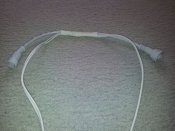Benslights
Dedicated elf
Hi Everyone
from chatting with you guys i know i need to inject more power after every 50 pixels. is it possible to see some pictures or a diagram of how your are doing this.
i would like to use rays connectors to do this on my display as i want to make it all easy to pack up and store.
so do i need a mix of 4 pin and 2 pin connectors?
also when injecting power i should do the negative aswell. i this correct.
look forward to your assistance.
from chatting with you guys i know i need to inject more power after every 50 pixels. is it possible to see some pictures or a diagram of how your are doing this.
i would like to use rays connectors to do this on my display as i want to make it all easy to pack up and store.
so do i need a mix of 4 pin and 2 pin connectors?
also when injecting power i should do the negative aswell. i this correct.
look forward to your assistance.


